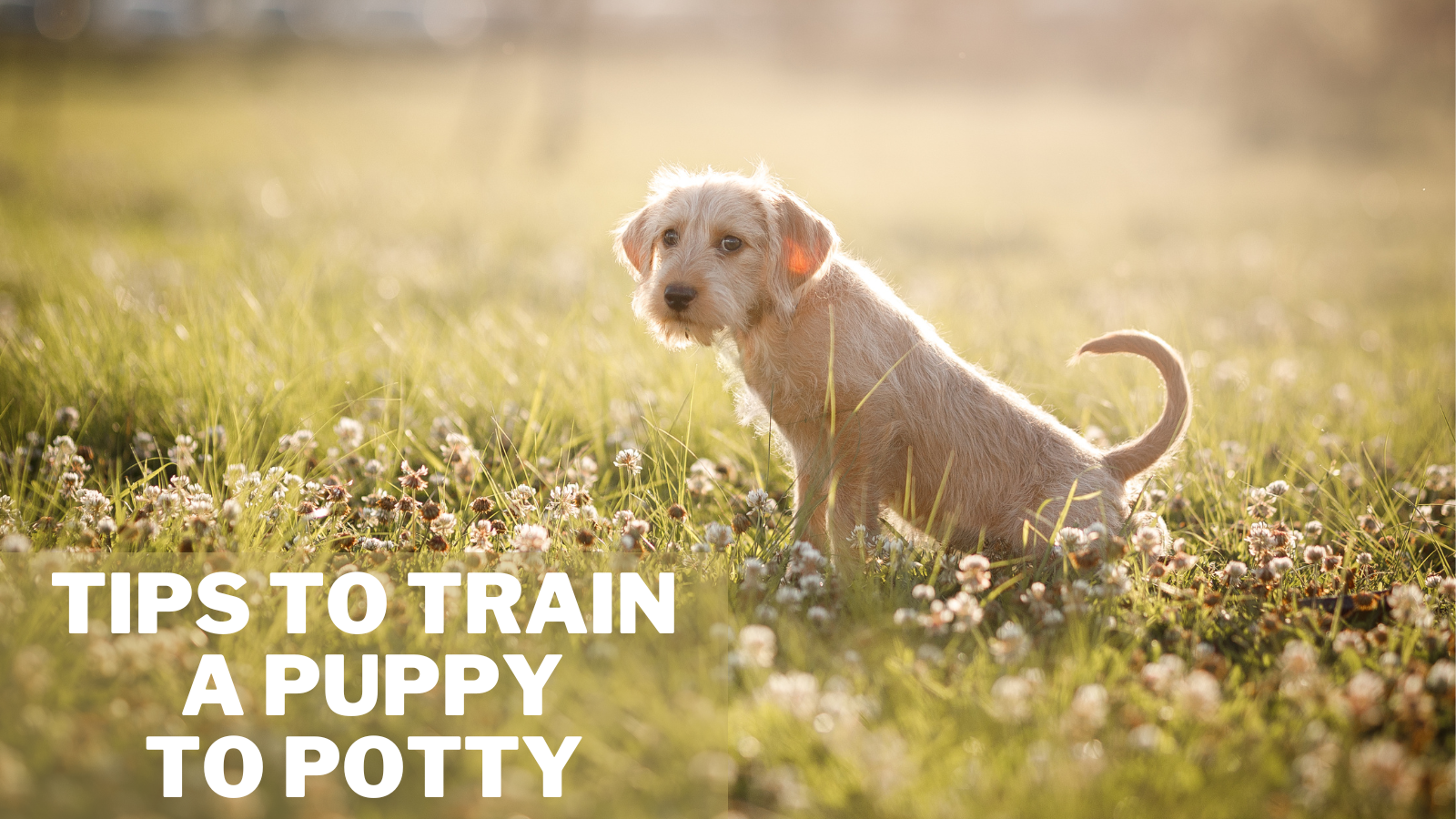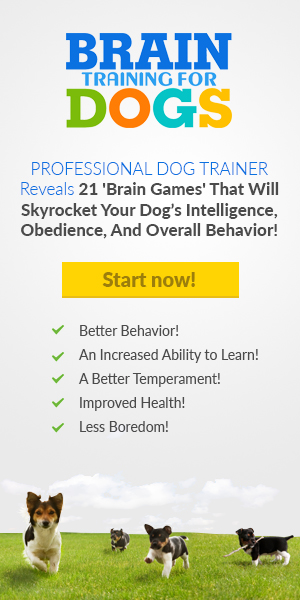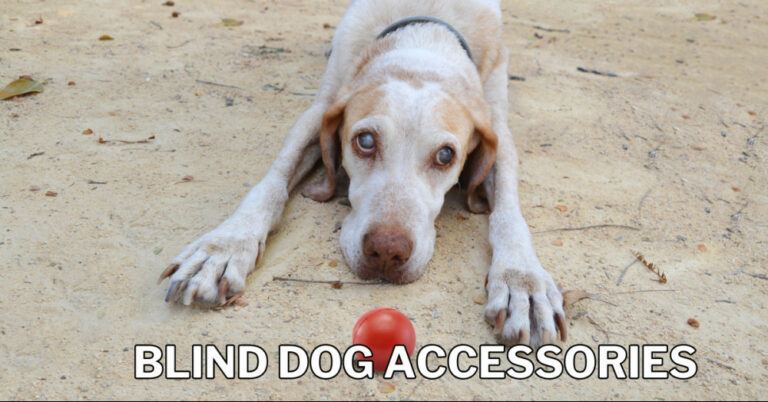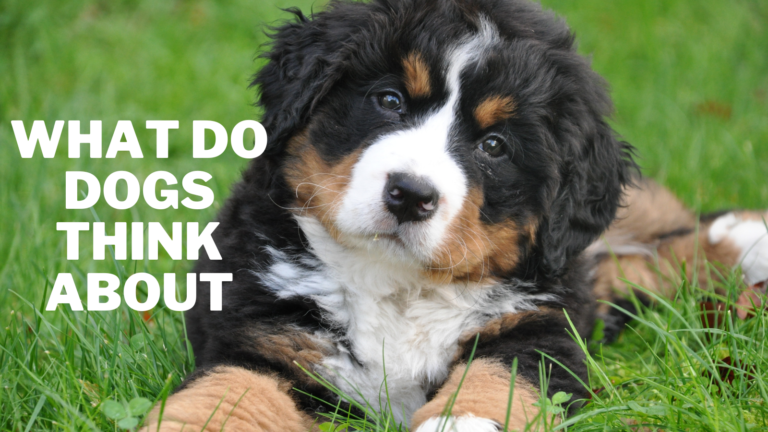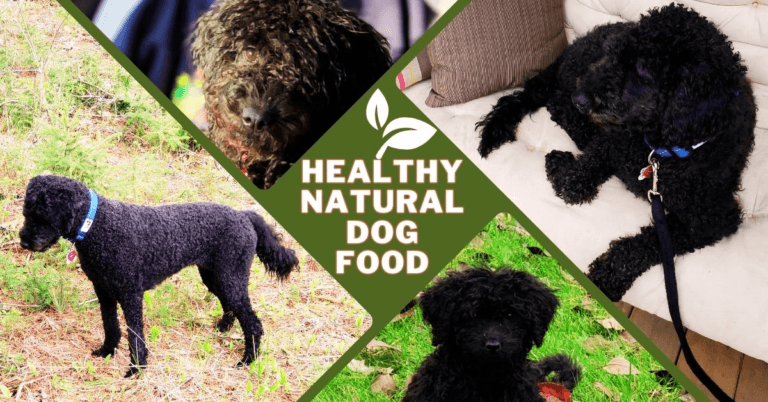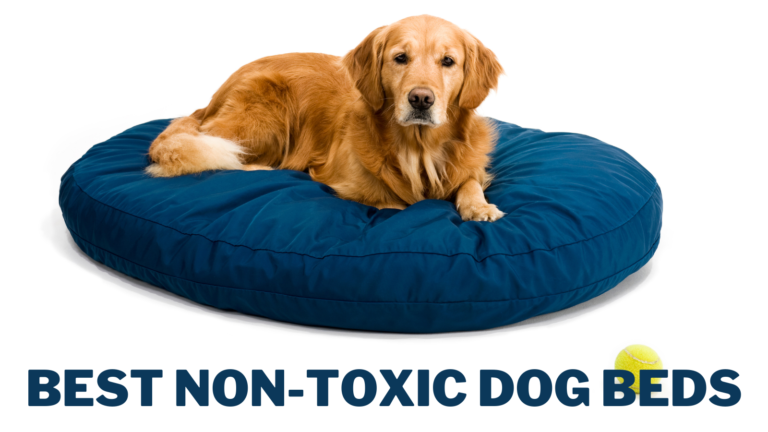Best Tips To Train A Puppy To Potty
Best Tips to Train A Puppy To Potty
Potty training a puppy can be daunting, especially for new pet owners. But with the right guidance and patience, you can help your furry friend learn this important life skill. This blog will provide easy-to-follow tips to train a puppy to potty.
From establishing a routine to supervising your pup, our tips will make the process stress-free and efficient.
Whether you're a first-time pet owner or a seasoned pro, our tips will ensure your puppy becomes a well-trained, happy and confident household member. Get ready to say goodbye to accidents and hello to a potty-trained pup!
13 Tips To Potty-Train Your Puppy
1. Establish A Routine For Your Puppy
A routine for taking your puppy outside to use the bathroom is an important step in potty training.
This involves taking your puppy outside first thing in the morning as soon as you wake up, after naps, and after playtime. This will help your puppy learn when to do his business outside.
It is important to stick to the established routine as much as possible and to allow your puppy enough time to use the bathroom.
On average, puppies need 5-15 minutes outside to do their business. Choose a designated potty area for your puppy, and supervise him while he is outside.
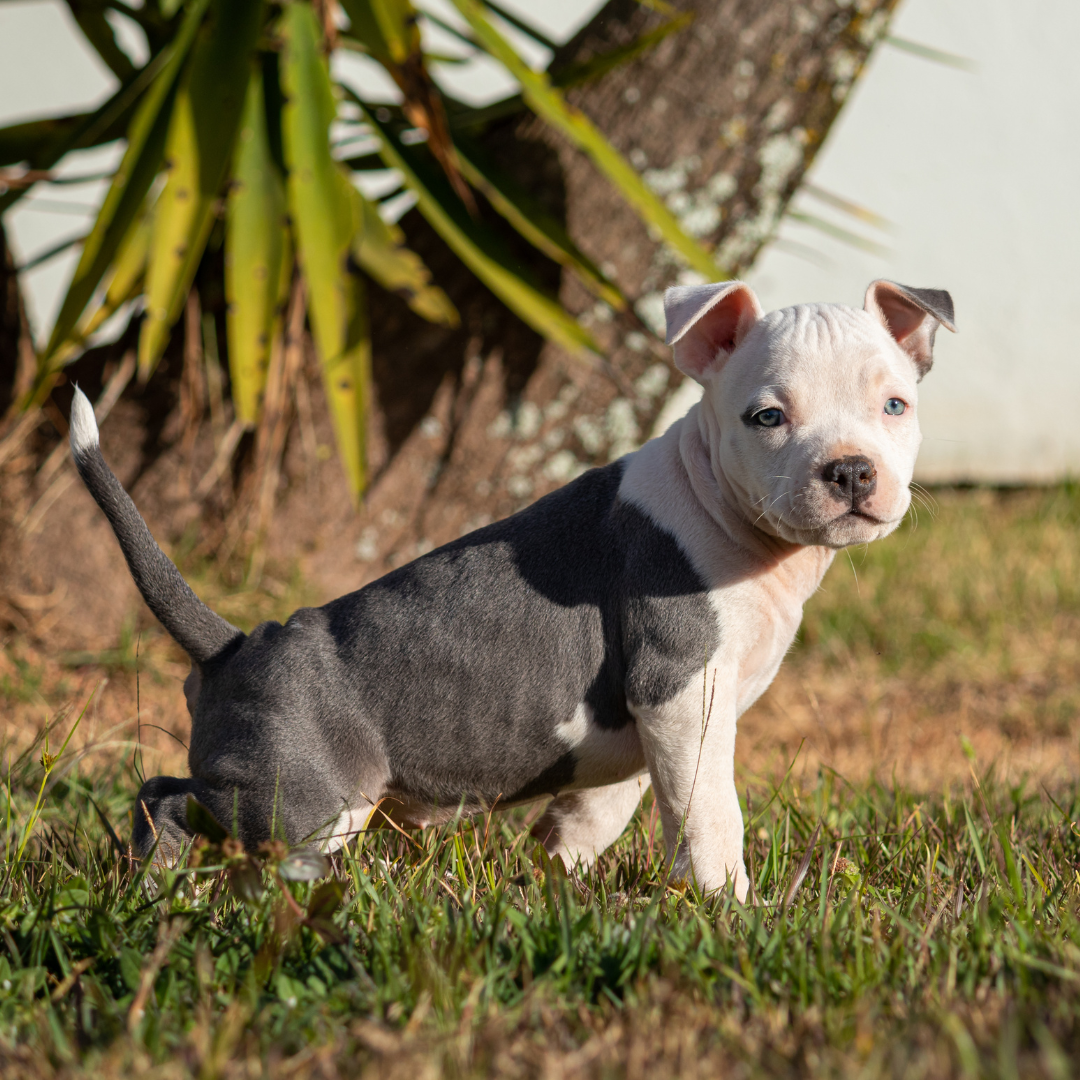
2. Watch For Signs To Help Your Puppy
To avoid accidents, it's important to watch for signs that your puppy needs to go. Some common signs include sniffing, whining, or circling.
When you notice these behaviours, take your puppy outside to the designated potty area as soon as possible.
Pay attention to your puppy's behaviour and habits; each puppy may have unique signals they need to go.
With patience and observation, you will learn to recognize your puppy's potty signals and be able to take him outside before accidents occur.
It's also helpful to keep a log of your puppy's potty habits, such as the time he goes and how long he takes, to predict better when he will need to go.
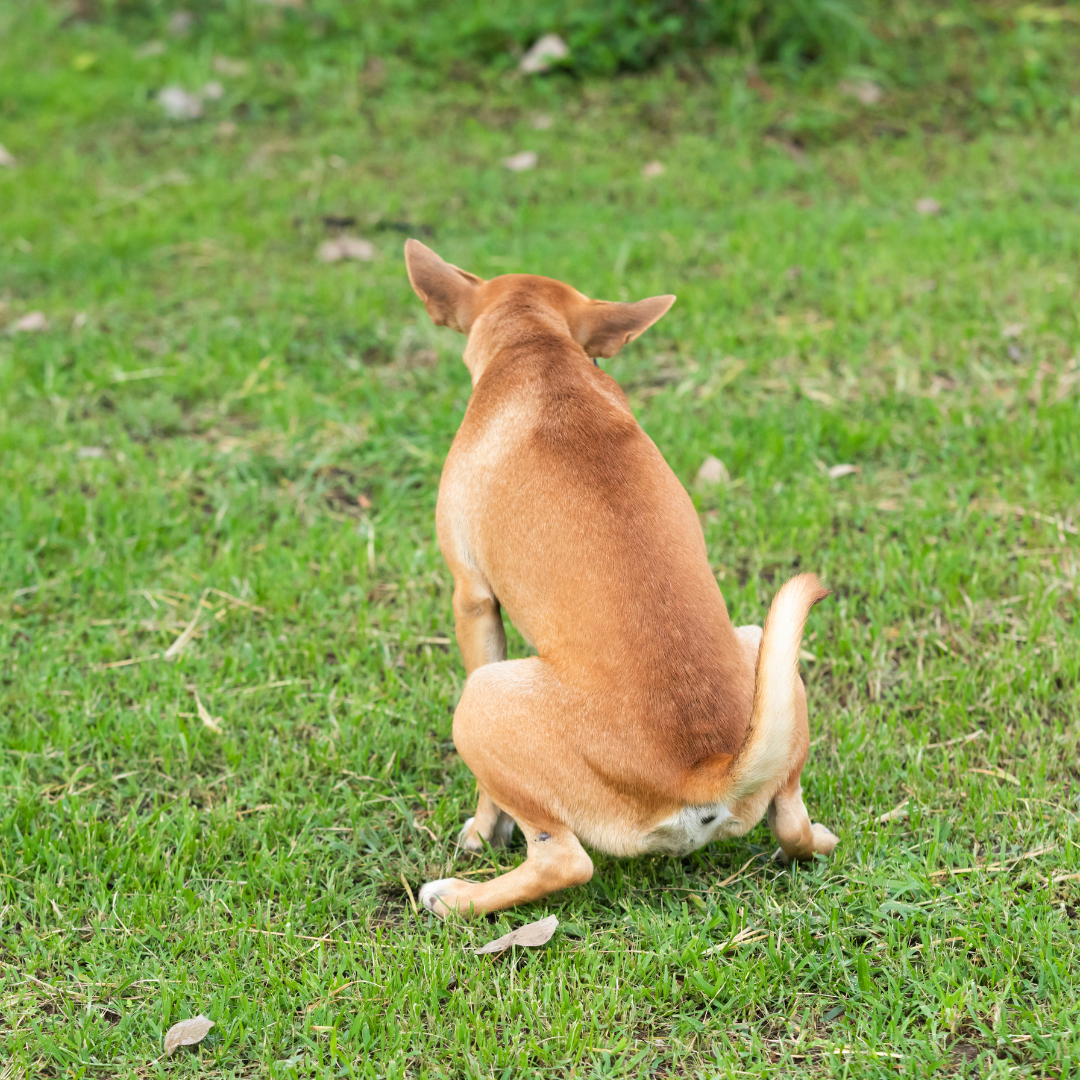
3. Use A Cue Word To Help Your Puppy
Using a consistent cue word when taking your puppy outside can help him learn to associate the word with the action of going potty.
The cue word should be upbeat each time you take your puppy outside to the designated potty area.
Some commonly used cue words include “potty,” “do your business,” or “go potty.” It's important to choose a cue word that is easy for your puppy to understand and to consistently use the same term each time you take your puppy out. I use “go pee” with Sadie. She knows the word and uses it for both types of elimination.
Over time, your puppy will learn to associate the cue word with the action of going potty and will respond to the word when it is said.
Using a cue word can help speed up the potty training process and make it easier for your puppy to understand what you expect of him.
4. Supervise Your Puppy
Supervising your puppy while he is outside to do his business is important for a successful potty training experience.
This involves standing outside with your puppy and giving him enough time to do his business.
During this time, avoiding distractions and keeping your puppy focused on the task is important.
Keep your puppy on a leash to ensure he stays in the designated potty area. Once your puppy is finished, give him plenty of praise and treats to reinforce the positive behaviour.
By supervising your puppy and providing a distraction-free environment, you can help him learn to use the bathroom outside successfully and avoid accidents inside.
Additionally, supervising your puppy can help you identify potential potty training issues and address them promptly.

5. Reward Your Puppy For Good Behaviour
Rewarding your puppy for good behaviour is a crucial part of the potty training process.
This involves giving lots of praise and treats each time your puppy successfully goes potty outside in the designated area.
The praise and treats should be given immediately after your puppy is finished to reinforce the positive behaviour and encourage your puppy to continue using the bathroom outside.
Positive reinforcement will help your puppy understand that going potty outside is desirable and make him more eager to comply with your training. Treats can also be used as a motivator for your puppy to go potty outside.
Over time, you can gradually decrease the frequency of treats as your puppy becomes more confident and consistent in using the bathroom outside.
It's important to remember to give plenty of praise and treats each time your puppy goes potty outside to help ensure a successful potty training experience.
6. Consistency Is Key For Potty Training
Consistency is crucial to potty training your puppy. By sticking to the established routine of taking your puppy out first thing in the morning, after naps, and after playtime, you help your puppy learn the association between going potty outside and positive rewards.
Over time, your puppy will understand that going potty outside is expected and receive praise and treats when he complies.
This will help him become confident in his potty training and make it more likely that he will go outside when you take him there.
Consistency also helps you set clear boundaries and expectations for your puppy, making the potty training process smoother and more efficient.
By being consistent in your routine and expectations, your puppy will better understand what is expected of him and feel more secure and confident in his potty training.
It's important to remember that consistency takes time and effort but will ultimately lead to a well-trained and happy puppy.
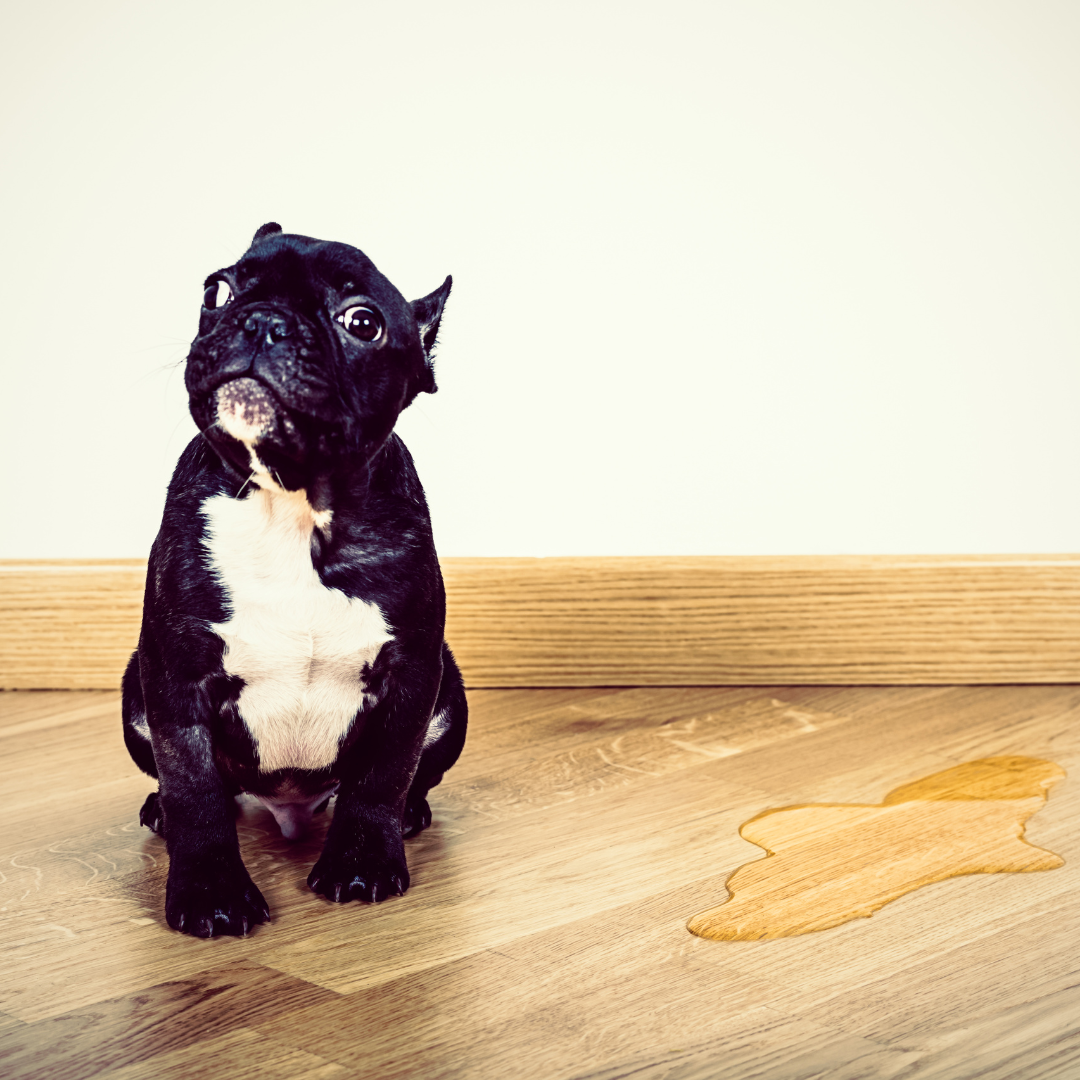
7. Clean-Up Accidents
Cleaning up accidents is important for potty training your puppy. If your puppy has an accident inside, it's important to clean it up thoroughly to remove any odours that might attract your puppy back to the same spot to go potty again.
You can use an enzymatic cleaner designed for pet urine to remove accident traces. When cleaning up accidents, it's important to redirect your puppy's attention to the designated potty area without scolding him.
Scolding your puppy for accidents can create fear and anxiety and may confuse the proper behaviour. Instead, clean up the accident and redirect your puppy's attention to the designated potty area.
You can take your puppy outside immediately after cleaning up the accident and offer praise and treats when he goes potty in the designated area.
This reinforces the positive behaviour of going potty outside and helps your puppy understand that going potty outside is expected and rewarded.
Cleaning up accidents thoroughly and redirecting your puppy's attention to the designated potty area without scolding can help your puppy feel more confident in his potty training and increase the likelihood that he will go potty outside in the future.
8. Be Patient When Potty Training Your Puppy
Patience is a vital part of potty training your puppy. It is important to understand that training takes time and is a gradual process.
Potty training is a new skill for your puppy; learning and understanding what is expected of him takes time. During this process, it's important to be patient and not to expect too much too soon.
Consistency and positive reinforcement are key factors in helping your puppy learn to use the bathroom outside.
You can help your puppy learn this important new skill by establishing a routine, watching for signs that it needs to go, using a consistent cue word, supervising, rewarding good behaviour, and being patient.
It's important to remember that every puppy is different, and some may take longer to learn than others.
Some puppies may be quick learners, and others may need more time and patience. It's important to be patient and remember that setbacks are normal and a part of the learning process.
Being patient can help your puppy feel more confident and secure in potty training, making it more likely that he will successfully learn to use the bathroom outside.
With time, patience, consistency, and positive reinforcement, your puppy will eventually learn to use the bathroom outside. You will be on your way to a happy and healthy life together.

9. Use A Clicker To Potty Train Your Puppy
Clicker training is a type of positive reinforcement training that involves using a handheld clicker to communicate with your puppy.
When used correctly, a clicker can be an effective tool in potty training your puppy. To use a clicker for potty training, you'll first need to train your puppy to associate the clicker's sound with a treat.
Once your puppy has made this association, you can use the clicker to mark the exact moment they go potty in the designated spot.
After marking the behaviour with the clicker, give your puppy a treat and praise to reinforce the behaviour.
This process should be repeated whenever your puppy goes potty in the designated spot.
The clicker's sound serves as a clear and consistent signal to your puppy that they have done something good and reinforces good potty habits.
By incorporating clicker training into your potty training routine, you can effectively communicate with your puppy and reinforce good potty habits, making the training process smoother and more enjoyable for you and your furry friend.
10. Socialization
Socialization refers to exposing a puppy to various people, animals, and environments in a positive and controlled manner.
The goal of socialization is to help the puppy develop confidence and reduce the likelihood of shyness and fearfulness in the future.
Socialization should start as soon as the puppy is fully vaccinated, and it is important to engage in positive and controlled experiences.
This can include inviting friends and family to interact with the puppy, arranging playdates with other friendly, vaccinated dogs, enrolling in puppy classes, visiting new places, and rewarding positive behaviour.
Gradual exposure to new experiences and avoiding negative experiences such as aggressive dogs or loud noises are key.
Positively socializing a puppy will help develop a well-rounded and confident personality.
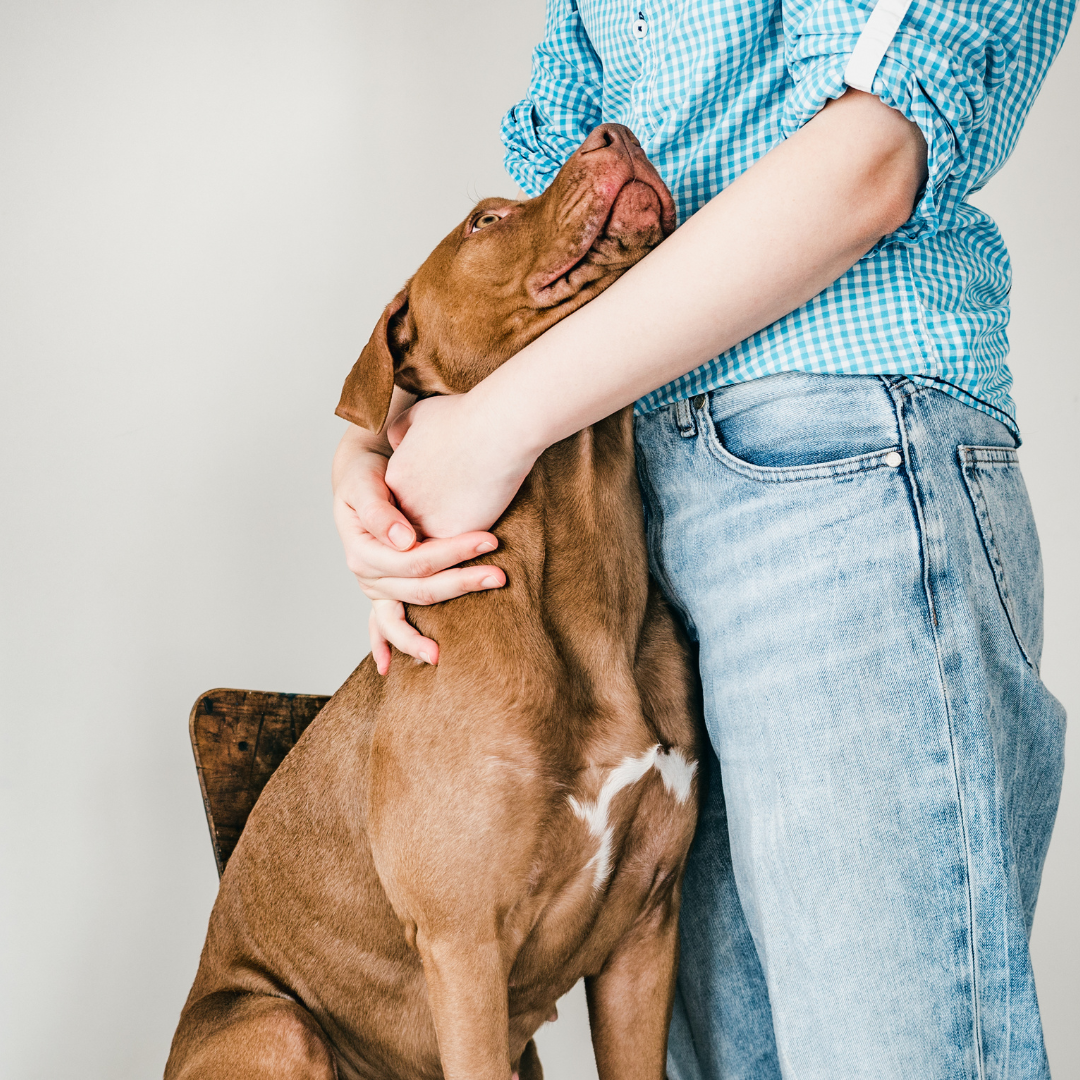
11. Use Positive Reinforcement For Your Puppy
Positive reinforcement is a training method that involves rewarding desired behaviour to increase the likelihood of it being repeated in the future.
Positive reinforcement can be applied during potty training by offering treats, toys, and praise immediately after the puppy goes potty in the designated area.
This helps to create a positive and enjoyable potty training experience and reinforces the desired behaviour of going potty in the designated area.
Consistent positive reinforcement increases the likelihood that the puppy will continue to potty in the designated area.
12. Creating A Positive Atmosphere
Creating a positive atmosphere during potty training can increase the likelihood of success by making the experience enjoyable for the puppy.
This can be done by using upbeat and friendly tones and body language, speaking to the puppy in a cheerful and optimistic tone, using positive gestures and facial expressions, avoiding punishment, providing distractions, and making the potty training process fun with games and playtime.
A positive atmosphere can help the puppy associate potty training with positive experiences, making it more likely to be successful.

13. Provide Treats
Treats can be a helpful tool in reinforcing desired behaviour during potty training.
Offering treats immediately after the puppy goes potty in the designated area rewards and reinforces the behaviour, making it more likely to be repeated.
To use treats effectively, choose small, low-calorie treats that appeal to the puppy. Offer them immediately after the desired behaviour.
Vary the type of treats used, use treats consistently, and gradually reduce the frequency over time as the puppy becomes more reliable with potty training.
Using treats this way can increase the chances of success and make the potty training experience for the puppy positive and enjoyable.
Troubleshooting Common Potty Training Issues
1. Regression In Potty Training
Regression in potty training may be caused by confusion due to changes in the household or routine, not going outside frequently enough, or inconsistent commands and rewards.
To address this, review the training process, use consistent commands, stick to a consistent schedule, and increase the frequency of trips outside.
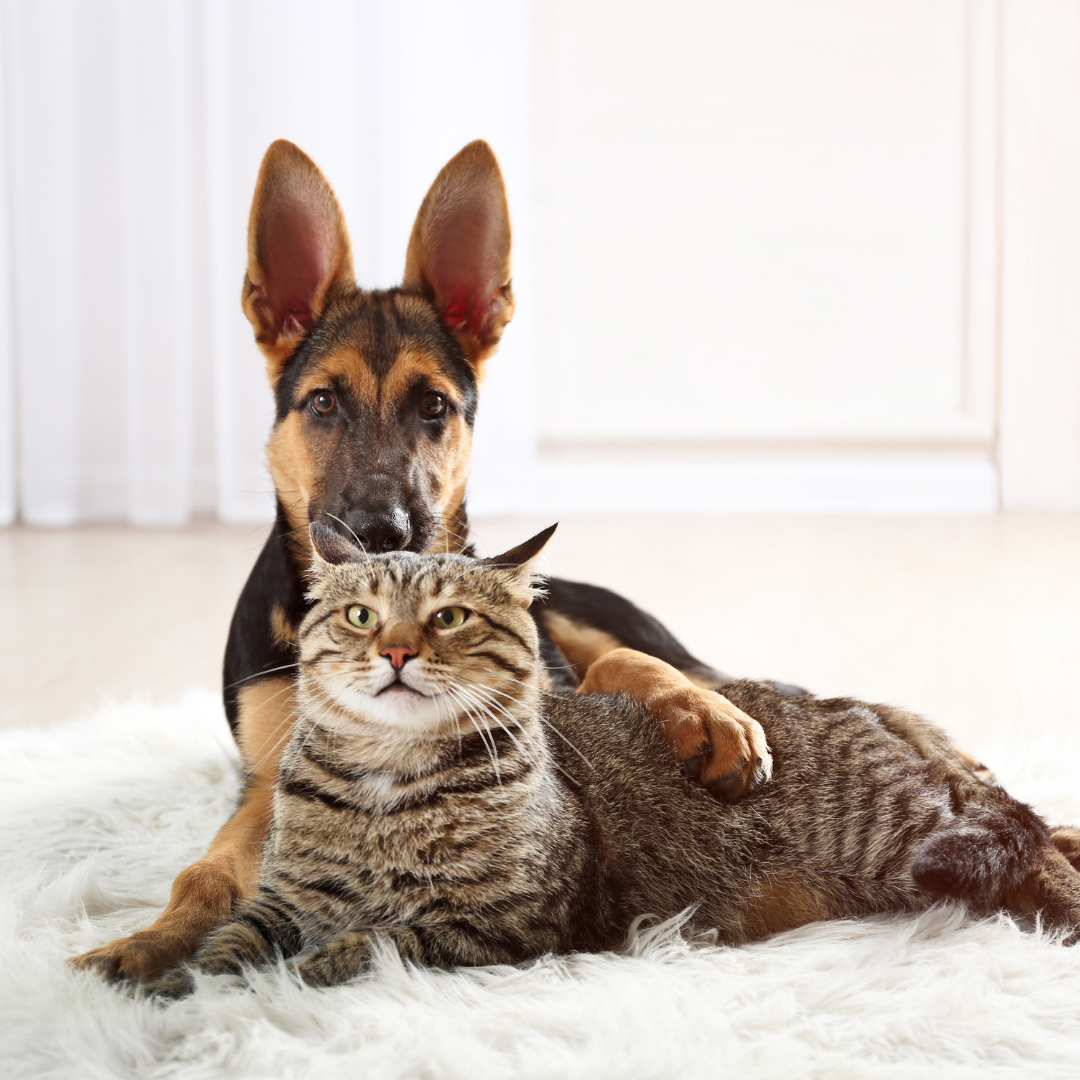
2. Allowing Puppy Onto Carpets
When you adopt a new puppy into your household, you adopt him into your life. Families often spend a lot of time in carpeted rooms in their homes.
Puppies may also experience issues with this. A carpet feels a lot like grass to a dog. It is plush and fluffy. A puppy would love to unwind and relieve himself there.
Even worse, it is nearly hard to completely remove all pee odours from carpets to a level that a puppy cannot detect.
Therefore, if you bring a young puppy into a carpeted room, he must be watched constantly. And ideally placed on your lap or in your arms.
Using baby gates to keep the puppy out of carpeted areas of the house is a preferable option for many households.
A crate next to your sofa with some nice kongs inside to keep him occupied is an alternative to letting your puppy run about at will if you want him to remain close to you while you watch TV in the evening.
3. Submissive Urination
Submissive urination can be caused by fear or nervousness. To help build the puppy's confidence and reduce stress, provide positive reinforcement training, create a relaxed and positive atmosphere during training sessions, and socialize the puppy with other dogs and people.

4. Small Crate
Your 8-week-old puppy won't last more than a few months in his current kennel. But the crate must be tiny if you intend to use it as a potty training tool.
We used a crate with a divider panel. This way, we could adjust the crate to Sadie's size.
Additionally, this implies that the crate time must be minimal. Not only is it unethical and inappropriate to keep a young puppy in a crate for an extended period, but once they are awake and active, they physically cannot wait.
The puppy won't be in there for very long unless it's the middle of the night, so it doesn't matter that there isn't an area for him to play.
5. Too Long Of A Stay In The Crate
Puppies will make every effort to avoid soiling their bed. However, the puppy's capacity to retain the contents of his bladder limits their attempts.
An aptitude that, very understandably, is somewhat constrained in the first few weeks of his life.
A crate can be a helpful potty training aid because it teaches the puppy to hold onto the contents of his bladder just a little longer. Naturally, the wait must be within the range of his physical maturity.
Many people misunderstand this proviso. As a result, a puppy will wet his bed. Dog parents may not always notice this until it has developed into a routine and the puppy has given up attempting to keep his bed dry.
6. Not Cleaning Up Effectively
Puppies have a helpful sense that prompts them to urinate in previously used areas.
This is advantageous since it implies that if you develop the habit of using the restroom in your yard or the designated spot for your dog, he will genuinely desire to do so again.
However, this inclination has a downside: it tempts the puppy to urinate indoors in locations where he has previously had an “accident.”
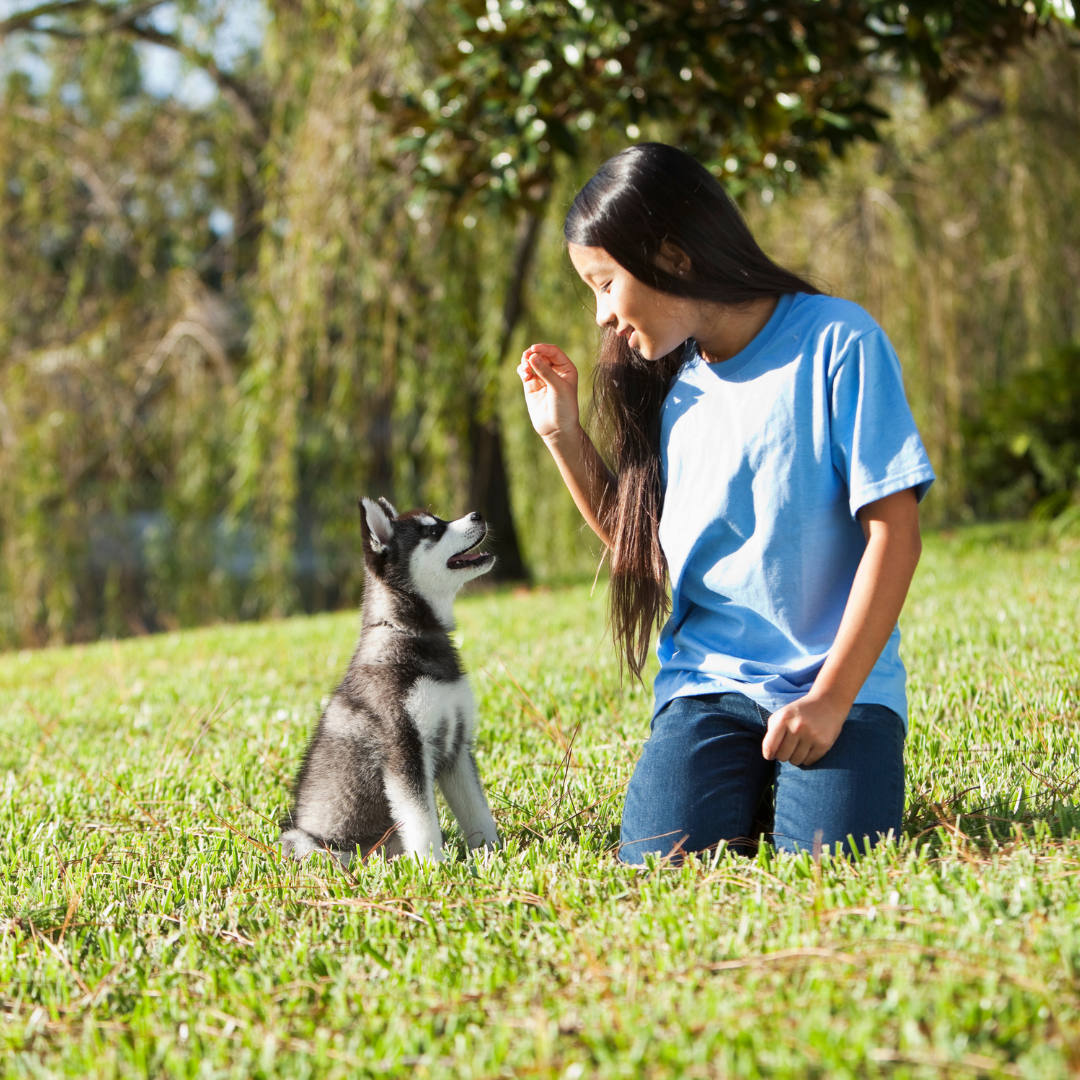
Conclusion
Potty training a puppy requires patience, consistency, and positive reinforcement. By creating a consistent routine and designating a specific potty area, using positive reinforcement techniques like treats and praise, socializing the puppy with other dogs and people, creating a positive atmosphere, and using a flexible training approach that takes into account the individual needs of the puppy, you can successfully potty train your furry friend.
Remember that potty training may take several weeks or months. With time, effort, and patience, your puppy will eventually learn the rules and routines of the household. Good luck with your potty training journey!
I trust you enjoyed this article on the Best Tips to Train A Puppy To Potty. Please stay tuned for more blog posts to come soon. Take care!
JeannetteZ
>>>Please click here to read my article on A Full Overview Of Dogs And Their Activity<<<
>>>Brain Training For Dogs Review<<<
My #1 Dog Training Recommendation
Your Opinion Is Important To Me
Do you have thoughts, ideas, or questions? I would love to hear from you. Please leave me your questions, experiences, and remarks about this article on the Best Tips to Train A Puppy To Potty in the comments section below. You can also reach me by email at Jeannette@Close-To-Nature.org.
Disclosure
This post may contain affiliate links. I earn from qualifying purchases as an Amazon Associate and other affiliate programs. Please read my full affiliate disclosure.
You might also enjoy these blog posts:
Special Tips For Growing Sugar-Apple In Containers
Best Essential Oils For Panic Attacks

